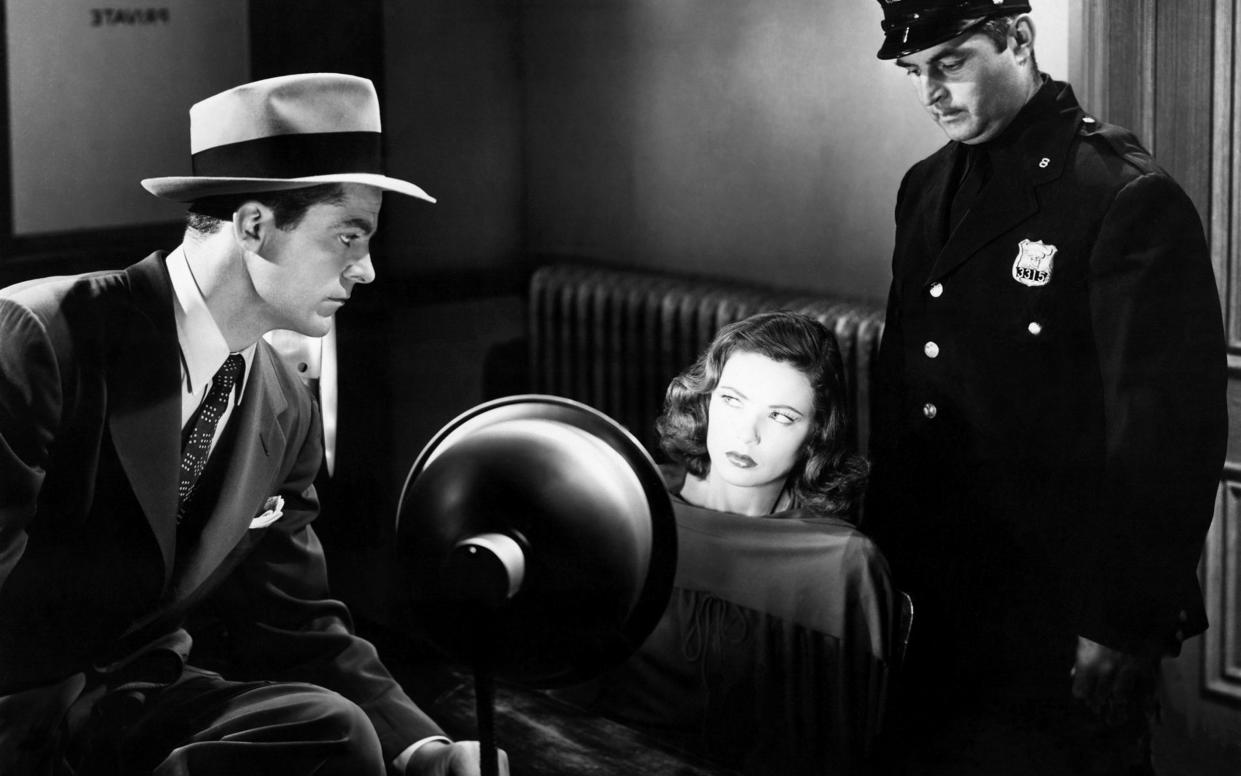Modern films are mindless, banal, and revoltingly flashy. I yearn for the days of classic cinema

- Oops!Something went wrong.Please try again later.
- Oops!Something went wrong.Please try again later.
The British Film Institute is having a Gene Tierney season. Tierney, who is largely forgotten today, has been described as the “most beautiful woman in the movies”. The film historian Cari Beuchamp writes of her thus; “her face can convey emotions, much stronger at times than words ever would”.
After making her Broadway debut in 1938, Tierney’s mesmerising pan, which no cosmetic surgery could have created, took her to Hollywood and gained her a contract with Twentieth Century Fox, where she made her finest films.
A great film is as rare as a flawless piece of jewellery, but Tierney completed at least five. The Forties and Fifties were her decades. Through her performances in noir masterpieces such as Laura and Leave Her to Heaven, she personified elegance and grace, combined with an enigmatic fragility; always ethereally beautiful.
Her scripts were witty and erudite, the very embodiment of intuition and all forms of impressionism. Due to the introduction of the 1934 Hays Code, which banned explicit sex in films, screenwriters channelled eroticism and its suggestion through words and gestures, something that contemporary films lack the intelligence to do. Some might argue that no one wants to see movies like Laura today. They would be wrong. The Gene Tierney season is a sellout and when I took the opportunity to see another of her great film noirs, Whirlpool, half of the audience consisted of millennials.
There is no one like Tierney anymore, with her eyes of eau de nil and air of a puzzled madonna. The sexiest modern actress, considered in her light, is no more than a study in artificial vulgarity and has no genuine aesthetic value. Her like is to be found not in the Uffizi gallery or in the sculptures of Canova, but among the cheap prints in a bargain basement Home Depot.
The same can be said of contemporary cinema. Tierney’s films show it for what it really is; mindless and banal, with a revolting flashiness. Recently, I watched a 1980s American Film Institute tribute to the great British director David Lean, whose work included Lawrence of Arabia and The Bridge on the River Kwai.
During his speech, Lean both predicted and decried the direction in which films were heading, referring to the lazy habit of making sequels, and the patronising attitude towards audience intelligence. He was prescient. In the Forties and Fifties, there was Citizen Kane, Casablanca, Laura, Double Indemnity, Sunset Boulevard and Hitchcock’s Vertigo, voted by critics the greatest movie ever made.
Today there are the Mission: Impossible and Marvel franchises, jukebox biopics of pop stars and a tawdry blockbuster called The Fall Guy, starring Ryan Gosling as a stunt man with an empty cranial cavity. Occasionally, we get a semi-precious stone like Oppenheimer or The Holdovers, but these are the exceptions. I blame the current Hollywood plutocracy, which favours inane futility and the striving for profit over the creative process. The money men of today lack both the inclination and the courage to make true art.

